| |
|
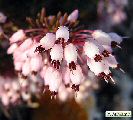 | |
| MaltaWildPlants.com by Stephen Mifsud |

|
| |
|
|
 |  |  |  |
| External Links: |
|
Muscari commutatum (Dark Grape Hyacinth) |
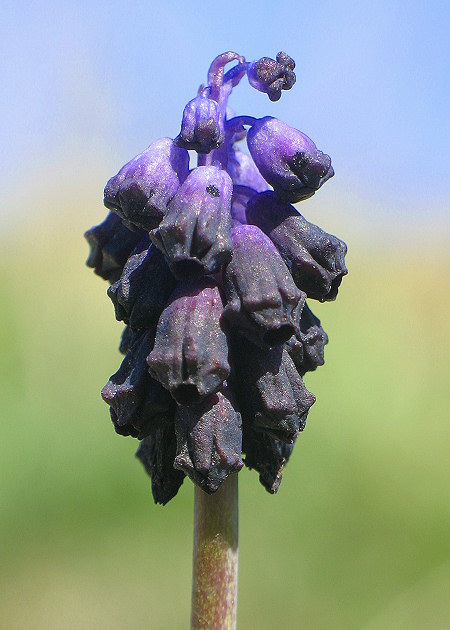
Muscari commutatum (ASPARAGACEAE.)
Images for this profile are taken from the Maltese Islands after year 2000. |
|
| Nomenclature |
Species name : | Muscari commutatum Guss. | Authority : | Giovanni Gussone, Italy, (1787 - 1866) | Synonyms :
(basionym or principal syn.) |
|
Plant Family : | Asparagaceae Juss. (= Liliaceae )
(Asparagus Family) | English name(s) : | Dark Grape Hyacinth, Narrow-leaved Grape Hyacinth | Maltese name(s) : | Muskari skuri | Status for Malta : | Indigenous. Present on the Maltese islands before man | Name Derivation : |
Muscari: Greek word for musk - a greasy secretion with a strong fragrant odour, produced in a glandular sac beneath the skin of the abdomen of the male musk deer and used in the manufacture of perfumes. Flowers of many species of this genus have this scent. (Greek origin ); 2 = Musk, referring to the scent of its flowers (Greek); Musk is a greasy secretion with a powerful odor, produced in a glandular sac beneath the skin of the abdomen of the male musk deer and used in the manufacture of perfumes.
commutatum: meaning changed or altered but in taxonomy it is often used for a species that is quite variable and was previously included in another species and have been described as a new and different species. In other words it was previously included in another species. (Latin origin ); 2 = changeable, changed or changing; used for a species that is very similar to one already known. (Latin).
| Remarks : | |
|
| Morphology and structure |
PLANT STRUCTURE: |
Character | Growth Form | Branching | Surface |
Description | | | |
General
Picture |  | 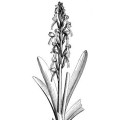 | 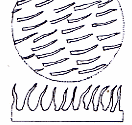 |
|
LEAVES: |
Character | Arrangement | Attachment | Venation |
Description | | | |
General
Picture | 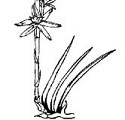 | 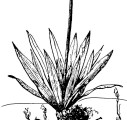 |  |
| |
Character | Leaf Shape | Leaf Margin | Remarks |
Description | | | Leaf Cross Section Channeled (U-shaped) due to the up-curved leaf margins. |
General
Picture |  |  |  |
|
FLOWERS: |
Character | Colour | Basic Flower Type | No. of Petals | No. of Sepals |
Description | Deep Blue-Violet Corolla tube is pale violet with 6 darker longitudinal vein. | | 6 To be botanically precise, the flower has 3 sepals (outer whorl) and 3 petals (inner whorl) which are identical, and so they are collectively referred to as 6 tepals or perianth segments. | 0 |
General
Picture | | 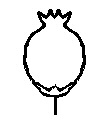 |  |  |
| |
Character | Inflorescence | Description | Ovary | Stamens |
Description | | The deep violet flowers are urn-shaped and found hanging down. The corolla tube is made up of 6 fused tepals with tiny black teeth at the nearly black rim. The opening of the flower is very small. reproductive organs are found inside and barely visible. | | |
General
Picture |  |  | 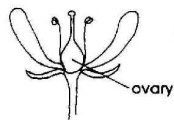 | 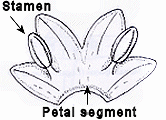 |
| |
Character | Scent | Average Flower Size | Pollen Colour | Other Notes |
Description | YES Fairly strong, sweet, plum-like scent. | 5mm x 3mm Tube length x widest diameter of the corolla. | Pale Blue or White The unmature anther is deep violet. | - |
|
SEEDS: |
Character | No. Per Fruit | Shape | Size | Colour |
Description | 6 (1 per locule, 3 locules per fruit.). | Sub-spherical Seeds have a spherical to oval shape. | 2mm long | Black (with a slightly shiny surface). |
General
Picture |  |  |  |  |
|
FRUIT AND OTHER BOTANICAL DATA: |
Character | Fruit Type | Colour of Fruit | Subterranean Parts | Other Notes |
Description | | Green Turns beige / straw-coloured when ripe and dry. | | - |
General
Picture | 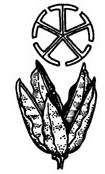 |  |  |  |
|
|
| Plant description and characters | |
Life Cycle: | Perennial. |
Growth Form: | GEOPHYTE (bearing underground bulbs, rhizomes, stolons, etc.) |
Habitat: | Garigue rich in soil, rocky ground, cultivated fields and waste places. |
Frequency: | Very Rare |
Localities in Malta: | Location remains undisclosed for protecting the plant. |
Plant Height: | 8-15cm. |
| Mar-Apr |
Protection in Malta: | Not legally protected till the last update of this website (2/Mar/2022) |
Red List 1989: | Threatened status for the Maltese Islands and has been listed in the Red Data Book (1st ed.) |
Poison: | |
This low-growing perennial plant is often found as patches of numerous specimen. The patch looks as many tangled linear leaves with erect flowering stalks, about 12cm high and bearing clusters of dark violet-blue flowers. Each plant is formed from a bulb that is ovoid, 1-4 cm across, and have a dark, glossy, brown tunic.
The plant forms few light green leaves that are linear, smooth, and channeled. They can be long up to 20cm and 3-5mm wide and usually are found protrate on the ground. The blunt tip is often yellowish. At about the beginning of February, the plant forms the scape (flowering stalk) which will form a short ovate raceme of about 12-30 flowers. Each flower have a slender, tiny pedicel (=2-4mm long). An interesting fact is that often, the main flowering stalk is decorated by a reddish spotted pattern. The apical flowers of the raceme are paler in colour, smaller and sterile.
The corolla is made up of 6 tepals that are fused except at their tip to form an inflated tube or urn shaped structure. The outer rim of the tube consists of 6 teeth-like flaps which open to form a small circular orifice when the flower is fertile and recipient to pollinators. The teeth close back when fertile period of the flower is passed.
The pedicel and the base of the flower is bright violet which intensifies rapidly to a black-violet colour towards the centre and rim. The teeth of the corolla tube of this species is nearly black, whereas that of a related species, Muscari neglectum is pale blue to white.
The reproductive organs are inside the corolla tube and barely visible. There are 6 stamens fixed with the middle part of the corolla tube and a central gynoecium. The latter consists of a globose, pale blue, superior ovary, a short style and a flat stigma. The anthers and short filaments are mainly dark violet, while on contrast, the pollen is white of pale blue.
The fruit is developed during the hotter months of April-June which are small, dehiscent, ovoid capsules. These split open longitudinally into 3 locules and release their small (=2mm) black seeds in the nearby area. Splitting of the fruit may assist in seed dispersion, but this is of limited distance.
|
|
| Information, uses and other details |
Nativity and distribution
According to reference [WWW-158] the distributional range of this plant is Crete, Grece, Italy and Sicily. Kaveh Saffari has written to us that he has seen this species also in NortWest Iran.
Propgation by Seeds and potting of the bulbs
Text written by Martin Philippo:
" This is mother natures way of keeping a diverse and healthy stock. Most diseases are not carried with seeds so this way of propagating is a very good and safe one. It is a bit more difficult than bulblets but still easy enough to do. For named cultivars this is not an option as the seedlings won't be like the bulbs that gave the seeds. It is the way to raise new varieties by cross pollinating.
All species can be propagated with seeds. For some, like Muscari latifolium and Muscari dionysicum it is the only way since they don't produce any or just very few bulblets.
Although some people prefer to let the seeds fall the natural way and let nature take its course I prefer the following method. Pick the seedheads just when they have turned paper-like and brown. This way the seeds within got the time to ripen for best results. Don't wait too long otherwise the seeds will have fallen out the way it goes in nature. Store the seedheads in a paper bag, open, untill they are very dry. The seeds can be taken from the seedheads very easily. I just crush the seedheads and blow away the chaff. Bigger stalks can be picked out by hand. What is left is a heap of little black, round seeds, ready for sowing.
I sow the seeds in pots in a nursery bed. The seeds are coverd with about 1 cm of soil. Use the same soil as mentioned on the page about bulblets. Muscari seeds need a period of winter to be stratified. In springtime some fertiliser is added. I leave the seeds for two years in their pots, after the first growing season the formed bulbs are still very small. I take the pots out of the soil to give them a dormant season like they would have in nature. I store the pots therefore in a dry place, just under a pane of glass outside on the allotment.
Replanting is in Oktober. I just plunge the pots back in the soil, give them a handfull of organic fertiliser and cover them against the frost in winter.
After two years the bulbs should be big enough to be taken out and replanted in a nursery bed or bigger pots. They are given more space too so they are not over crowded.
Seeing the seeds emerge, with the tiny black covers of the seed on top of the single leaf, is really amazing. It gives me a thrill every time. Most Muscaris will flower in three years time, provided they received enough food, water and sun.
I know many gardeners who grow their bulbs in pots in a glasshouse. They all live in a cool climate, like the UK, with wet summers. In the glasshouse the climate can be controlled, as well as the soil the bulbs live in. Especially for those who garden in heavy clay or wet soils this is a major advantage.
Important for growing bulbs in pots is of course the growing medium. Nearly all bulbs dislike waterlogged soil so drainige should be excellent. Needless to say the pots temselves shoud have a hole in the bottom. Old fashioned clay pots are ideal because they provide good drainage through bottom and sides. The growing medium itself should also have good drainage. Usually a general potting soil is used, mixed with equal parts of course sand or grit.
For nutrition some organic fertilizer should be added. A handful of blood fish and bone meal or dried cow manure is fine. During the growing season a gift of tomato fertilizer can be applied. Muscaris can be greedy feeders, especially those that make a lot of bulblets, such as M. armeniacum and M. neglectum. " [WWW-159]
Karyological results from speceis of Muscari commutatum from Greece.
Muscari commutatum Guss. is a species widely distributed over the central and eastern Mediterranean area. According to a recent investigation (Del Guacchio & Nazzaro, 2002), the species includes also Muscari lafarinae (Lojac.) Garbari, that was previously considered as a separate unit, endemic of Sicily (Italy).
The taxonomic position of Muscari lafarinae has been controversed; Parlatore (1852) indicated it simply as a variety of Muscari commutatum Guss., while Lojacono (1908) described it as a distinct species under Botryanthus, that was
considered a separate subgenus of Muscari. Garbari (1984) indicated it as a distinct species, pointing out differences between the two units; these consist in the morphology of the plants, as the breadth of the leaves, in the phenology, as the blooming period, and in the colour of the anthocyanic pigmentation of the ovary.
The morphometric investigation of Del Guacchio and Nazzaro (2002), showed that the variation of these characters may be considered as a natural variation among the populations of the species, being these variations nearly continuous.
Consequently the authors proposed the synonymization of Muscari commutatum Guss. and Muscari lafarinae (Lojac.) Garbari. This conclusion agrees with the karyological aspect, that hasn't showed differences between the two units, as
affirmed by Garbari (1966). The karyotype of the species is usually diploid with 2n=18, as indicated by
Garbari (1966, 1968) for material from Italy; the same result is indicated by Karlén (1984), considering 36 populations all over Greece. Only two of these populations, from Samos (east Aegean Islands), indicated a triploid chromosome number, 2n=27, showing also a different flower size; curiously, no diploids have been found on this
island.
Also from Turkey is reported a triploid chromosome number, in addition to the diploid one. Finally a tetraploid karyotype 2n=36 is indicated for Cyprus. The karyotype shows relatively short metacentric to
submetacentric chromosomes, being the total length of the complement about 65 µm. A satellite is reported by some authors on the short arm of the second chromosome pair. [378]
Notes on the Genus Muscari
The genus Muscari is called commonly grape-hyacinth (from Greek "moschos",
musk, alluding to the scent of the flowers). It contains perennial, scapose herbs with
ovoid bulbs, with or without bulblets; cataphylls from greysh to brown. Leaves (1-) 2-7,
basal; blade linear, sometimes sulcate, glabrous, rather fleshy. Scape terete.
Inflorescences terminally racemose, many-flowered,
dense, bracteate, usually elongating in fruit; distal flowers smaller, sterile, differing
in color, forming a tuft; bracts minute. Flowers fragrant; perianth tubular to
urceolate, usually constricted basally; tepals 6, connate most of their length, distal
portions distinct, reflexed, short, toothlike; stamens 6, epitepalous, in 2 rows,
included; anthers dark blue, dorsifixed, globose; ovary superior, green, 3-locular,
inner tepals with nectaries; style 1; stigma 3-lobed. Fruits capsular, obtusely 3-
angled, papery, dehiscence loculicidal. Seeds 6, black, globose, wrinkled to
reticulate. x = 9.
This genus has a widespread distribution. It is present in the whole Mediterranean
basin as far as Caucasus; temperate Europe, north Africa, southwest Asia. It is
expected introduced elsewhere and likewise contain a number of ornamentals [378]
A shorter description of Muscari by another reference [WWW-166] is as follows:
Bulbous perennials. Leaves all basal, linear, flat or grooved, ± fleshy. Flowers small, flask-shaped, oblong to globose, constricted at mouth, crowded in stiff, erect racemes, apical flowers often smaller and sterile; lobes very short, tooth-like, often reflexed; pedicels short; bracts minute or 0. Capsule loculicidal, triquetrous. Seeds ± globose, few, glossy, black, often wrinkled. Spp. c. 60, of Europe, W. Asia and N. Africa. Adventive sp. 1.
History of the Muscari Taxon
The genus Muscari has been segregated into a separate family, Hyacinthaceae, in
respect to the Liliaceae sensu lato, according to Dahlgren.
The family Hyacinthaceae is included in the order Asparagales, superorder
Liliiflorae. The taxonomic history of this taxon is very articulate. Kunth (1843), thinking to
attribuite to the genus Muscari Mill. only the species M. moschatum (L.) (=Hyacinthus muscari L.),
instituited the genus Botryanthus to which referred the
species B. vulgaris, B. odorus, B. commutatus and B. parviflorus. Other species have
been considered by Kunt as belonging to the genus Bellevalia Lapeyr: B. comosa and
B. maritima.
Parlatore (1845) agreed confirming the institution of the
genus Botryanthus by Kunth (1843) and the extension of the genus Muscari, but he
wasn't in agreement to insert in the genus Bellevalia the species M. comosum and B.
maritima, even admitting the separation from Muscari Mill. So it was necessary the
institution of the new genus Leopoldia (Parlatore, 1845), to honour the Grand Duke
of Tuscany Leopoldo II. When Parlatore (1845) described Leopoldia, he based the
genus on three different species belonging to three different genera; Hyacinthus
comosus L. (which was selected as lectotype for the genus Leopoldia by Garbari and
Greuter, 1970), Muscari maritimum Desf., and Bellevalia pinardii Boiss.
In more recent times other nomenclatural and taxonomic vicissitudes followed.
Garbari (1968) accepted the validity of the genus of Leopoldia, considered the genus
Moscharia Salisb. as a synonym of Muscarimia Kostel. to which two species were
assigned, M. muscari (L.) A. Los. and M. macrocarpa (Sweet) Garbari. Finally, he
assigned all the species previously referred to Botryanthus (Kunth) Bak. to the genus
Muscari, following other authors. Furthermore, in the frame of a cytotaxonomical
revision, Garbari (1968) pointed out the biosystematic value of the three generic
units (Leopoldia, Muscarimia and Muscari), also confirmed - in the author's opinion by
karyological studies. [378]
Toxicity
The bulb is poisonous [4] . It contains a substance called comisic acid, which is said to act like saponin [4]. Although poisonous, saponins are poorly absorbed by the human body and so most pass through without harm. Saponins are quite bitter and can be found in many common foods such as some beans. They can be removed by carefully leaching the seed or flour in running water. Thorough cooking, and perhaps changing the cooking water once, will also normally remove most of them. However, it is not advisable to eat large quantities of food that contain saponins. Saponins are much more toxic to some creatures, such as fish, and hunting tribes have traditionally put large quantities of them in streams, lakes etc in order to stupefy or kill the fish [KF].
These toxic notes were referring tothe closely related species - M. neglectum and most probably similarly apply to M. commutatum. [SM]
Edible Uses
Despite the toxicity of the bulbs mentioned above there are other reports which state that the bulbs are edible if cooked [2, 132, 177, 183] . Again, this note referred to M. neglectum, a closely related species to M. commutatum. [SM]
Personal Observations
Similar species
In Malta there is another Muscari species that is also rare and quite similar to Muscari commutatum. This closely related species is Muscari neglectum and at a first glance the two are rather indistinguishable. The main distinguishing difference is the rim of the corolla tube where in M. neglectum the rim is pale blue or white, while in M. commutatum it is dark violet, nearly black. [SM]
Recentely discovered in Malta
This plant has been reported for the first time recentely (1986), by a certain Mr. Michael Briffa. [377] This plant is in fact not found in the book listing almost all the flora of the Maltese islands by Haslam et al (A flora of the Maltese islands) last published in 1977. However, it is then found on the Red Data book for the Maltese islands published in 1989.
The plant is very rare and fragile and should never be picked up. [SM]
|
|
| Links & Further literature
(1 papers) |

Google Web |

Google Images |

Google Scholar |

Research Gate |

Wikipedia |

JSTOR |

GBIF |

Med Checklist |

Cat. of Life |

EoL |

IPNI |

World Flora Online |

Plants of the World Online |

Vienna Virt. Herb. |

RBGE Herbarium |

KEW Herbarium |

MNHN |

Arkive |

IUCN |

CABI |
 |
Updates in the Flora of the Maltese Islands (Central Mediterranean) |
Stephen Mifsud (2007) |
Kindly Email if there are papers and publications about local
studies or information about this species to be included in the list above.
|
| Photo Gallery (35 Images) |  |
 |
 |
 |
IMAGE: MUSCM-01 Photo of the inflorescence which consists of numerous (12-30), inflated tube-like flowers with a typical dark-violet colour. |
IMAGE: MUSCM-02 Photo of flowers formed by 6 fused tepals which each ends with a pair of bulging knobs and a tooth-like tip. |
IMAGE: MUSCM-03 Photo of flowers showing their unique colour which is pale or bright violet at the base and gradually darkens to a nearly black colour at the tip. |
IMAGE: MUSCM-04 Photo of flowers showing their small opening. The rim is formed by what is referred to as 'teeth' and in this species they are deep violet. In a related species, Muscari neglectum, the teeth are pale blue or white. |
 |
 |
 |
 |
IMAGE: MUSCM-05 Photo of the deep violet flowers. |
IMAGE: MUSCM-06 Photo of the 'bottom' part of the flowers showing their openings. Curiously, when the flower is not viable for fertilisation, the opening is closed. In this photo, the uppermost sterile flowers and the lowest old flowers have no opening. |
IMAGE: MUSCM-07 Close up photo of the flower openings. A part of any of the 6 anthers that reside inside the corolla tube are visible in one of the flowers. |
IMAGE: MUSCM-08 Photo of the apical sterile flowers. They have a beautiful pale violet colour which gradually darkens to a deep violet. Note the tiny pedicel holding the flower to the peduncle. |
 |
 |
 |
 |
IMAGE: MUSCM-09 Photo of a patch of plants with their characteristic deep violet flower clusters. |
IMAGE: MUSCM-10 Photo of plants growing over rocky ground. |
IMAGE: MUSCM-11 Low level photo of the plants. They are about 12cm high with the numerous leaves prostate on the ground. |
IMAGE: MUSCM-12 Photo of the erect flowering stalks with flowers hanging down. |
 |
 |
 |
 |
IMAGE: MUSCM-13 Photo of several flowers from a patch of plants. |
IMAGE: MUSCM-14 Another photo of several flower clusters. |
IMAGE: MUSCM-15 Photo of three stalked flower-clusters. Note the reddish pattern on the scape. |
IMAGE: MUSCM-16 Photo of 2 flower clusters. |
 |
 |
 |
 |
IMAGE: MUSCM-17 Photo of plants over rocky ground. As clearly shown, numerous plants grow in isolated patches. Plants of a particular patch is formed by progressive sub-division of the bulbs. The first plant(s) of a new patch is probably formed by seed dispersion. |
IMAGE: MUSCM-18 Photo of plants in situ found as numerous prostate leaves often tangled in each other (like a plate of spaghetti) and numerous peduncles with dark violet flowers. |
IMAGE: MUSCM-19 Another photo of the rare plants in situ. |
IMAGE: MUSCM-20 Scanned image of the flower cluster and scape. The cluster is about 2 cm long. |
 |
 |
 |
 |
IMAGE: MUSCM-21 Enlarged scanned image of the flower raceme. |
IMAGE: MUSCM-22 Scanned image of the flower cluster. Some flowers have been removed to show their tiny pedicels holding the flower with the scape. Since the flowers are stalked, the inflorescence is described as raceme. Note the colour change of the scape from reddish-green to an intense violet at the apex. |
IMAGE: MUSCM-23 Scanned and enlarged image of the sterile flowers. They have a more vibrant colour change than the lower fertile flowers. |
IMAGE: MUSCM-24 Enlarged scanned image of 2 flowers, one having part of the corolla tube removed to show the internal reproductive organs. Stamens (total 6) are attached half way to the internal wall of the corolla tube. |
 |
 |
 |
 |
IMAGE: MUSCM-25 Annotated and scanned diagram of a dissected flower. |
IMAGE: MUSCM-26 Annotated and scanned diagram of a dissected flower. |
IMAGE: MUSCM-27 Scanned image of a sequence of flowers arranged according to their gradual development (buds at the left, mature flower at the right). |
IMAGE: MUSCM-28 Photo of leaves in situ. They are prostrate, linear, channeled (cross section is U shaped), plentiful and often tangled into each other. |
 |
 |
 |
 |
IMAGE: MUSCM-29 Scanned image of the leaves. Tip often yellowish. |
IMAGE: MUSCM-30 Photo of scape (flowering stalk) which have this interesting reddish pattern, especially at the upper part. |
IMAGE: MUSCM-31 Enlarged and scanned image of the scape showing the detail of the reddish, mosaic-like patterns. Scape is not more from 2mm across. |
IMAGE: MUSCM-32 Photo of an insect which was found in several numbers wandering on the flower clusters. It is called the Asphodel bug ( Capsodes lineolatus ). |
 |
 |
 |
| IMAGE: MUSCM-33 Photo of an Asphodel bug which most probably feeds on the flowers and hence assist in the pollination and fertilization of the flowers. |
IMAGE: MUSCM-34 Two photos of a common reddish insect found on the flowers of Muscari commutatum. |
IMAGE: MUSCM-35 Close up photo of the Capsodes lineolatus showing its nice orange-red/black colours. |
IMAGE: MUSCM-36 |
|
| | |

